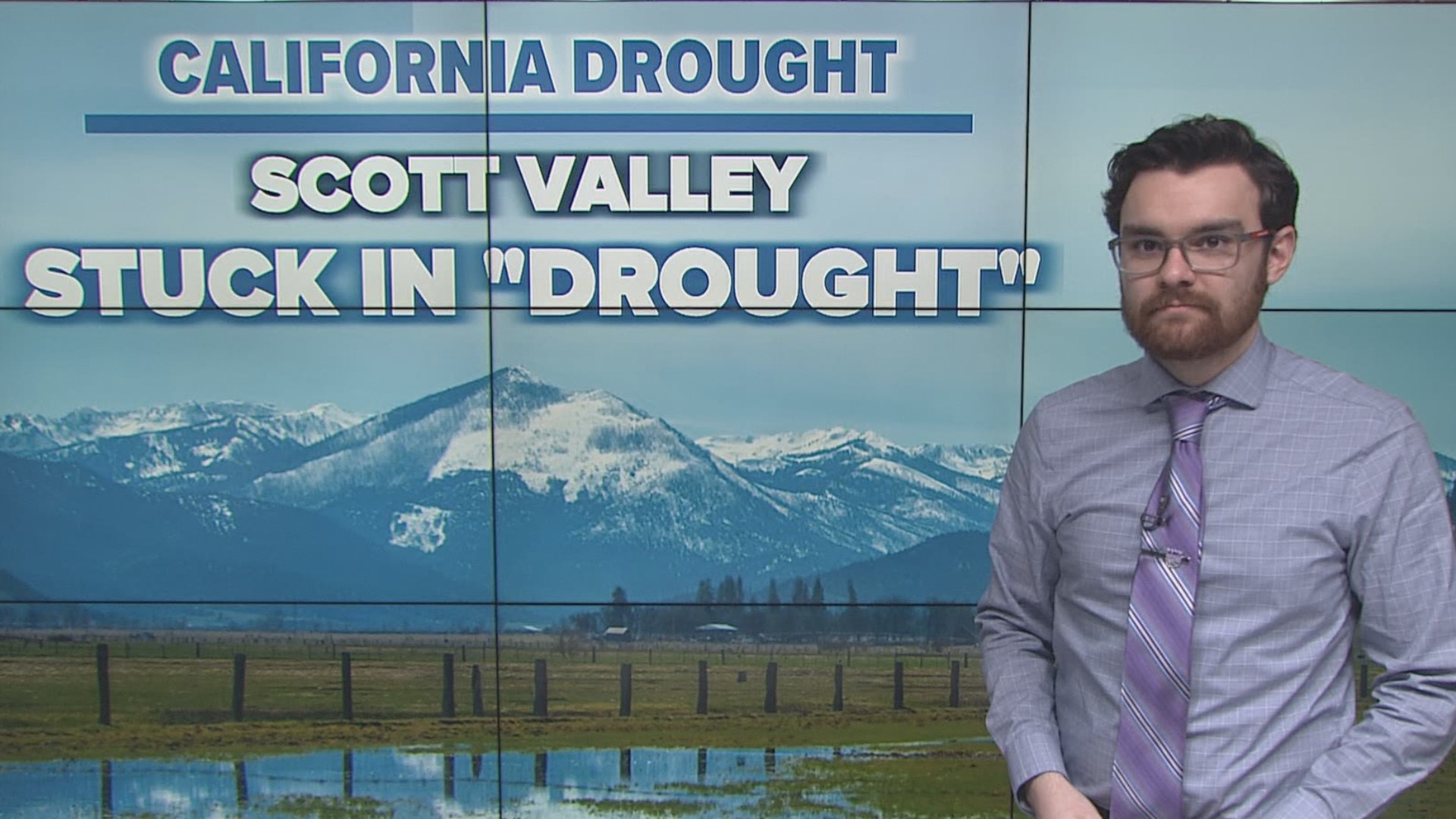SACRAMENTO, Calif. —
Following a record wet winter, drought conditions continue to improve statewide.
While most of the state has fully escaped drought, it holds on in far northern California along with the desert of southeastern California, according to the drought monitor updated weekly by the National Drought Mitigation Center.
Rising reservoir levels, a large snowpack, and improved soil moisture have helped to propel the state to its lowest level of drought since February of 2020.
Included in this area still considered in a drought is Scott Valley, located in Siskiyou County.
"We're a little farming and ranching community. We're in a small valley that's at the base of the marble mountains in the Scott mountains," said Theodora Johnson, spokesperson for the Scott Valley Agriculture Water Alliance.
Like so many other communities across the state, Scott Valley has had to contend with the challenges the drought has presented.
This winter has been a godsend to the community as it has been for the rest of the state.
"We're a snowmelt fed system primarily. So when we have a great snowpack like we do this year, we know we're going to have a good water year," Johnson said.
Although the area has received abundant rain and snow this winter, it remains under emergency drought regulations. The regulations put a chokehold on farmers and ranchers in the area.
"The regulation on us was going to curtail our groundwater by 100%, unless we agreed to reduce our groundwater use by 30%. And this is just for agricultural use. We were also limited in how much water we were allowed to give our cattle and sheep during a curtailment," Johnson said.
Scott Valley has been told by the state to stop pumping groundwater, even though the Water Alliance believes they have had more than enough precipitation to return to normal operations.
"I mean, it's disappointing that we're still in D1, because our snowpack is at 167% for snow water equivalent in Scott Valley," Johnson said.
D1 drought coincides with moderate drought conditions. Because of the restrictions in place, the agriculture industry will continue to struggle as will the aquifer recharge practices that have been used for years.
"It prohibited us from using our earthen ditches to water our livestock, which is something we've done for 100 years, and ditches in a way are doing recharge by spreading out water over the landscape," Johnson said. "It's recharging the aquifer at the same time that it's providing an important water source for our animals."
Ultimately, she wants the state to remove the emergency drought regulations on the Scott Valley.
They’re doing more harm than good at this point, and with much above average snowpack and snow water equivalent, she wants the valley and its farmers to get back to managing their land and water in the ways they know best.
WATCH ALSO:



















